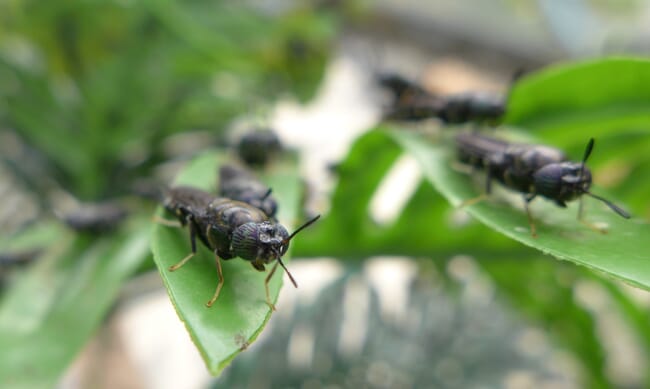
© Nutri Tech
It has been known for some time that insects are an excellent source of protein for humans and animals. But that their exoskeletons and other waste from insect-as-food-and-feed production also can have a positive effect on plant growth is still relatively unknown.
“These residual flows from insect cultivation can – when added to the soil - improve the growth, health, pollination and resilience of plants and promote sustainable crop cultivation,” explained Marcel Dicke, professor of entomology at Wageningen University, in a press release.
He discusses the potential of using residual streams from insect breeding in an opinion paper in the journal Trends in Plant Science.
By-products from insect production come in two main forms: exuviae, the exoskeletons left behind after moulting, and frass, which is insect waste and unconsumed food.
When added to soil, the exuviae and frass work to promote both plant growth and health. Insect faeces are rich in nitrogen, a nutrient that is pivotal to plant growth but is scarce in most soils, and often added to crops with synthetic fertilizer. The insect exoskeletons are rich in chitin, a polymer that is difficult for most organisms to digest.
“There is, however, a set of bacteria that can metabolize chitin, and those microbes help plants to be more resilient to diseases and pests,” said Dicke. “When exuviae are added to soil, the populations of those beneficial bacteria increase.”
The researchers now plan to investigate the potential for exuviae to work as pest control. When a plant is attacked by an insect its leaves can produce volatiles that attract the predators of the pest. “I call it the plant’s cry for help,” said Dicke. “They are recruiting bodyguards.”
Dicke thinks that a similar process may be happening through the plants’ roots and that the microbes that are digesting the chitin in the insect waste might also be acting as security for the plants by breaking down pathogenic fungi and making the plant resilient to pests. “Studies have already shown that microbes associated with the roots help plants by protecting against diseases,” said Dicke. “Now we’re investigating whether plant roots recruit microbes that help them in defending against pests.”


